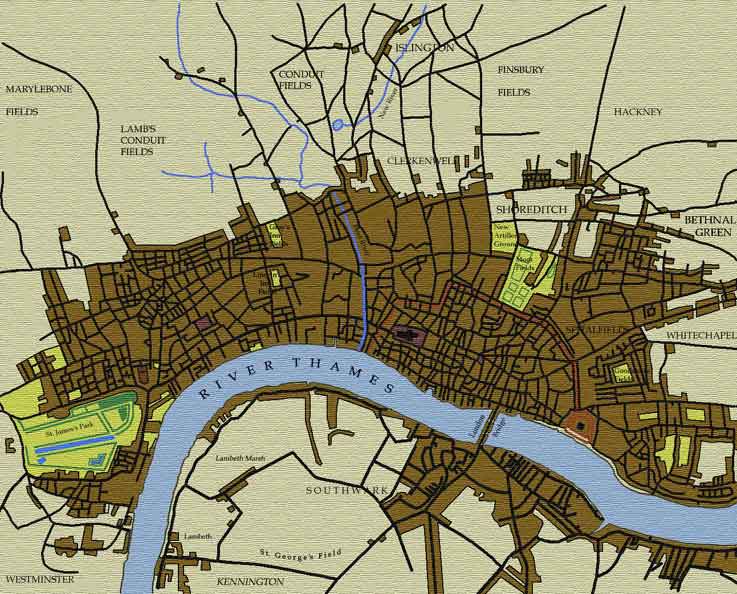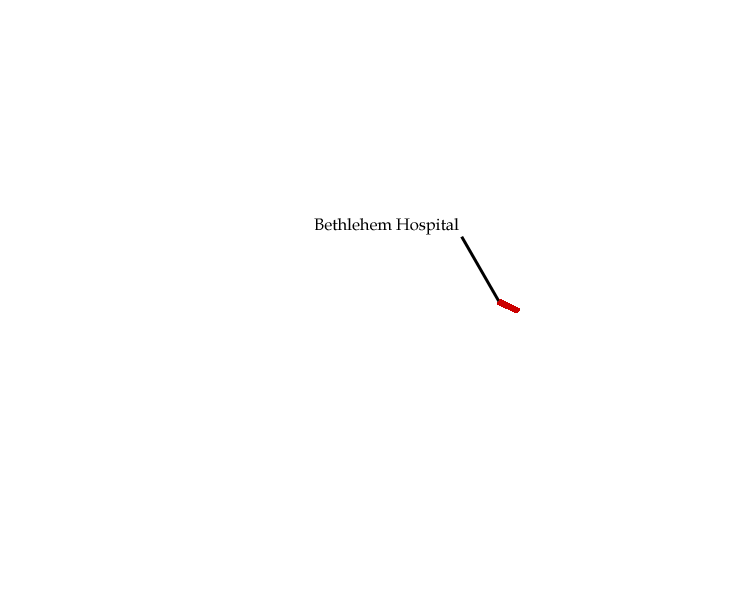


London ca. 1676
Bethlehem Hospital (Bedlam)
|
Bethlehem Hospital – from whence derives the word "Bedlam" – was originally built in the sixteenth century to succeed the original St. Mary of Bethlehem hospital, which had been employed to house "distracted people" since the 14th century. In 1547, the land of the dissolved priory was given to the City of London in order that it might provide for "lunatics": the hospital that was built on the site seems to have held about 60 inmates at a time. |
|
The original hospital was spared by
the Great Fire, but it was determined that its fabric was, in any case,
too far decayed to continue in service; it was therefore decided to build
a new one in its place. Accordingly, a new and grander hospital was constructed
in 1676 to the designs of Robert Hooke at Moorfields, a little farther
from the centre of the City than the original hospital. The new building
was impressive, and was much admired by many, including the French refugee
Henri Misson, and John Evelyn. It was also much larger, and held up to
about 150 patients; amongst these was the Restoration poet and playwright
Nat Lee. In 1815, a new hospital was built in St. George's Fields, on
the south side of the Thames, and the old hospital was torn down. "Bedlam" held a relatively prominent place in the popular imagination of the age, in part, no doubt, because so many Londoners had the opportunity to observe it in operation. It was, in fact, a popular tourist attraction from the beginning of the seventeenth-century; admission in 1753 was two pence. The hospital derived a fair amount of revenue from such visitors, and the practice was not discontinued until near the end of the eighteenth century. |
 |
Website maintained by: Mark
McDayter
Website administrator: Mark McDayter
Last updated: April 25, 2002